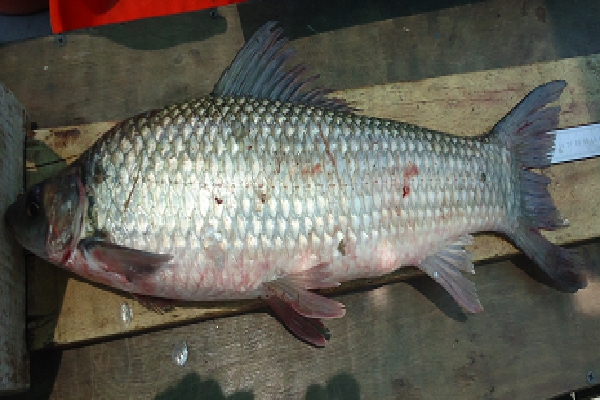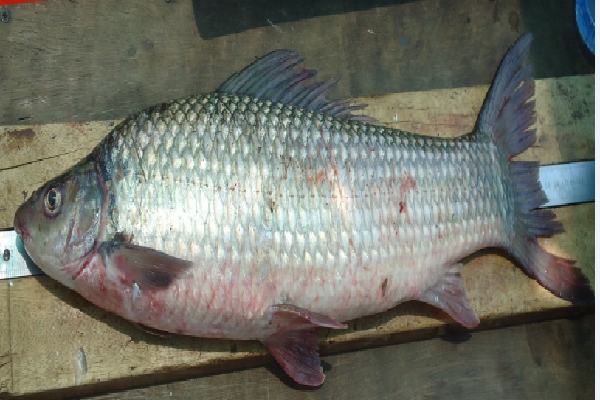Common names:
Unknown
None
Taxonomic tree
Kingdom: Animalia
Phylum: Chordata
Class: Actinopterygii (ray-finned fish)
Order: Cypriniformes (Carps)
Family: Cyprinidae (Carps)
Genus: Labeo
Species: Labeo horie (Heckel, 1847)
Number of Occurrancies: 30
Etymology(based on Sharpf & Lazara 2019)
- Labeo: one with large lips, referring to “remarkably thick, fleshy lips” (translation) of L. fimbriatus and L. niloticus (=vulgaris)
- horie: local name for this species in Assuan, Egyp
Synonyms: click here to view synonyms
Type locality: Assuan, Egypt. Syntypes: at National Museum of Wales (NMW)
General idenfication features for cyprinids: A naked head (=without scales); jaws completely devoid of teeth; one or two pairs of circum-oral barbel, which are, however, absent in some species; no adipose fin; and presence of a sickle-shaped paired pharyngeal bones, each bearing 1-3 series of teeth.
Distinguishing characters for the genus
- Origin of the dorsal fin well in advance of pelvic fin insertions (vs. Labeobarbus and Enteromius: origin of dorsal fin is above pelvic fin base,or slightly in advance of, or behind this point).
- Rounded snout with a flap of skin immediately in front of upper lip (vs. Garra: no flap of skin in front of upper lip, but with a well developed, almost circular disc on the chin which confluent with lower lip).
- Lateral line running along middle of the flank and the caudal peduncle (vs. Rastrineobola, Engraulicypris, and Leptocypris: lateral line is situated below the middle of flank and caudal peduncal, and the cheek below the eye is covered by thin sub-orbital bones).
Distinguishing characters for species
- Lips with numerous rows of papillae; inner surface surface smooth (distinction from L. forskahlii, L. coubie, and L. victorianus); a minute barbel present but hidden in the folds of skin at the angle of the mouth
- Depth of body contained 4-5 times in standard length, length of head 4-6 times (relatively longer in smaller fishes)
- Snout broadly rounded, about 1/3 head length and shorter than post-ocular part of the head
- Eye visible from above and below (separates from L. forskahlii), its diameter contained 3-6 times in head length (relatively larger in smaller fishes)
- Dorsal fin with III, 12-14 rays, its upper margin straight or slightly convex
- Lateral line with 40-44 scales
- Caudal peduncal as long as deep
- Colour is greenish-brown above, golden below; young fishes have a distinct but ill-defined dark spot on the lateral line scales above the pectoral fin
Distribution in Uganda: Lakes Albert and Kyoga, Murchison Nile
Occurence: Native
Habitat: Benthopelagic; in Lake Albert, restricted to in inshore waters and sheltered bays; Potamodromous
Feeding: Ostracods, microscopic plants, macrophytes and sand
Biology: The fish can grow up to 72 cm, but no information exists on the reproductive biology and life-history of the species
Economic importance/End use: The species formed a flourishing fishery before 1970s but collapsed commercially due to overfishing. Remnant riverine populations are harvetsed for food in riparian communities.
IUCN conservation status: click here to view IUCN status
Threats: Fishing
Main references
- Greenwood PH. 1966. The fishes of Uganda. The Uganda Society, Kampala. 131 pages.
- Sharpf C, Lazara J.K. 2019. Fish Name Etymology Database v5. www.etyfish.org


